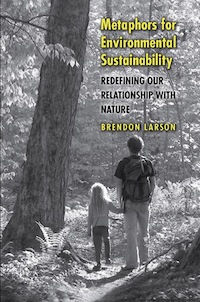 Attention to metaphors and their analysis have in recent years increasingly come out of the realm of poetry into the realm of social and other sciences. This book review, along with the book itself, could well be read in this context.
Attention to metaphors and their analysis have in recent years increasingly come out of the realm of poetry into the realm of social and other sciences. This book review, along with the book itself, could well be read in this context.
There are two distinct approaches to such an analysis. One concerns the use of metaphors by members of the setting under study, from experts and other elites to “ordinary” people. For instance, are scientists (or whoever the actor or actors are who are “native” to the setting under study) intentionally introducing metaphors to think and talk about the subject of their work, or are actors’ uses of metaphors more “natural,” less conscious, in the course of everyday practices and their affiliated talk? The second approach looks at the metaphors used in academic theorizing, asking how those shape the ways theorists conceive of the subjects they study.
In either case, these analyses are influenced by an approach to metaphors from cognitive linguistics, which argues that metaphors characterize everyday language and, far from being “mere” decorations that can be removed from speech or writing in order to reveal a more “solid” set of words – the approach of an earlier understanding of metaphor dating to Aristotle – metaphors are ways in which people make sense of the world, giving voice to prior understandings and, in turn, shaping subsequent action with respect to the metaphor’s subject. George Lakoff has been the central figure in these developments within linguistics, and his initial book with philosopher Mark Johnson, Metaphors We Live By, is a very readable entree into this way of thinking. In the context of public policy and organizational studies, Donald Schon’s essay, “Generative metaphor,” in both editions of the collection edited by Andrew Ortony, is a key articulation, as is Donald Miller’s engagement with Schon’s work, and my own empirical and methodological theorizing builds on both. In the context of metaphors shaping scientific theorizing, Richard Harvey Brown’s essay on metaphors of social theory and Joseph Gusfield’s “The literary rhetoric of science” are key. And one would be remiss not to mention D. McCloskey’s The Rhetoric of Economics in the context of attention to scientific language shaping thought and analysis.
What all of these, and other, works have argued is that we need to pay attention to metaphors as part of normal, everyday thought processes, whether “on the street” or in the laboratory (metaphorically speaking), not just as an “idle” and/or accidental use of language. Such an approach means that scientists who use metaphors are not malevolent – or, at any rate, no more or less so than the rest of us; and, because metaphors are so “natural” and we all use them, they can easily slip by the attention of even the most careful reviewer or other reader. To understand both the review and the book more fully, we need to grasp what work metaphors are doing in scientific work.
